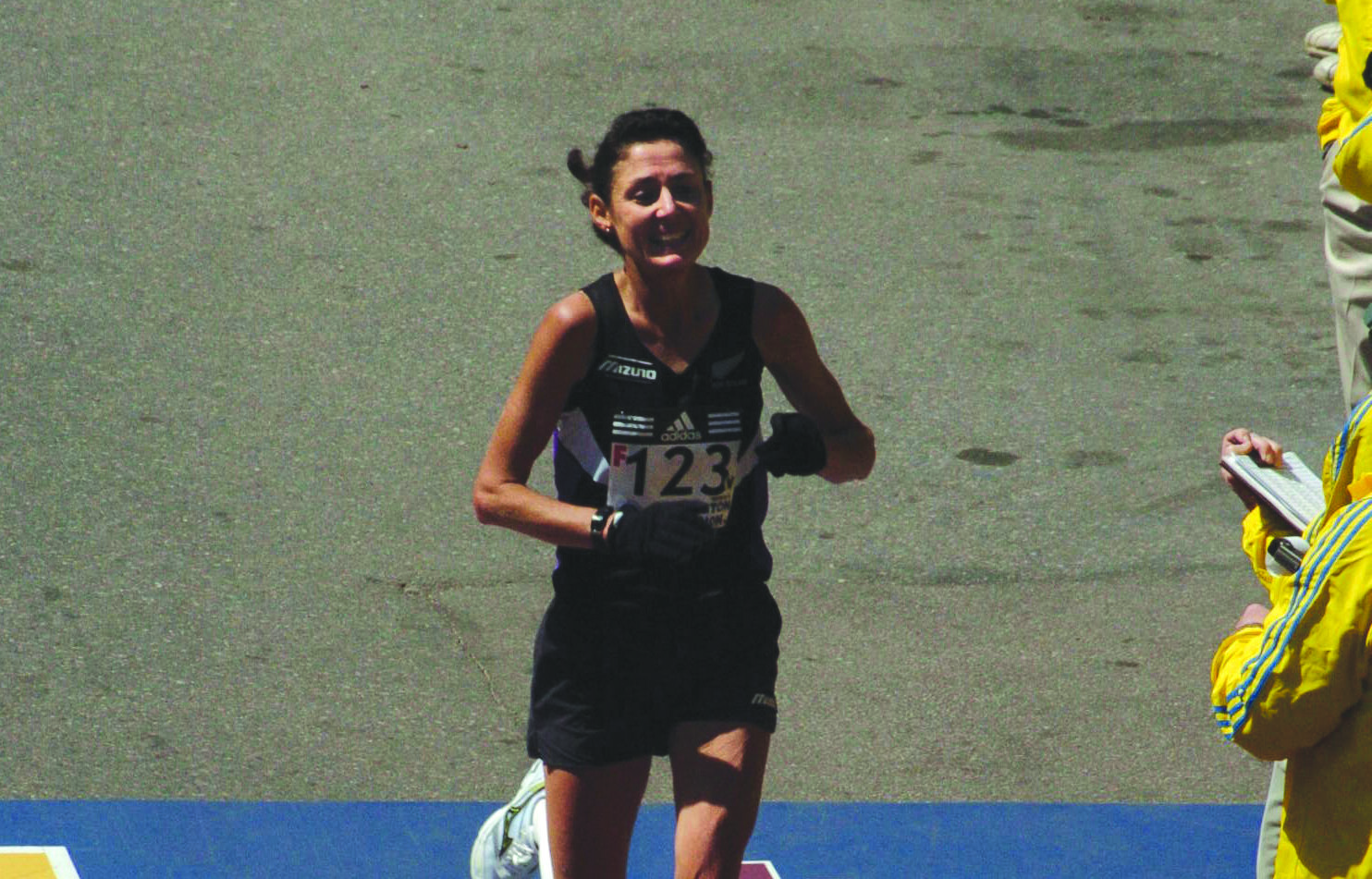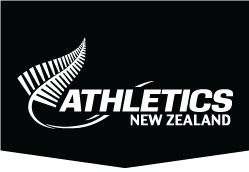News & Updates
Gabby is Made to Measure

Gabby O’Rourke has made the move from an accomplished international distance-running career to a prominent course measurer in New Zealand.
When athletes took to the start line for the inaugural New Zealand Road Mile Championships in Rotorua earlier this month, many did not give much time or thought to the fact the distance they were set to complete was fully accurate.
Those in the know, however, understand a rigorous process is put in place to ensure accuracy when measuring courses and the diligent work all officials must undergo in order to achieve a measurers certification.
Former New Zealand World Half Marathon representative Gabrielle (Gabby) O’Rourke knows better than most the dedication required after five years of mentoring and studying, she has become one of only four World Athletics-AIMS B grade course measurers in New Zealand.
The road to Gabby – who enjoyed more than 25 years of top-level running snaring New Zealand half-marathon and marathon titles and competing for her country in the 1993 World Championship marathon and 1999 World Half Marathon Championships – to becoming a course measurer began after she was forced to stop racing eight years ago when suffering a cardiac arrest during a race.
Subsequently diagnosed with a hereditary heart condition, her mum encouraged her to stay involved in the sport. Initially, she became a race referee, but from her days as a leading athlete she knew how critical accurately measured courses were for all competitors.
“Back in the early 1990s when I was trying to qualify for World Champs the new rules around courses having to be certified came in and we had to go overseas to qualify due to a lack of certified races here in New Zealand,” explains Gabby. “I pushed for Athletics NZ to get more people trained up. Dave Cundy came over from Australia and ran a course which eventually saw the likes of Peter Maunder, Craig Brown and Paul Craddock become B Grade course measurers which allowed them to measure courses here in New Zealand to IAAF/AIMS (now World Athletics – AIMS) standard.”
Starting locally, Gabby was initially supported by Emma Brookes, and more recently mentored by the vastly experienced Peter Maunder, who has been a course measurer for almost 50 years.
“It’s taken five years of being mentored by Peter, measuring courses from as far south as Dunedin to the Rotorua Marathon. All the paperwork is submitted to Dave Cundy (Vice President and Technical Director at AIMS) for approval. He is very particular about how the spreadsheets, maps and application forms are completed, and at times I felt like giving up because I didn’t know if I’d ever reach his high standards.”
Initially carrying out practice measurements at local races which did not require certification, she gradually developed the skills necessary to thrive in the role. Gabby stresses that the bulk of the work is carried out in pre-measuring preparation and completing the post-measuring paperwork.
So what skills does she say are helpful in the role?
“Having a bit of maths knowledge is really helpful,” says Wellington-based Gabby. “Peter is a surveyor and I’m a maths teacher (at Scots College) and we have plenty of geeky conversations when we’re number crunching. Don’t let the maths put you off though as it’s only one part of the measuring process.”
Achieving the World Athletics – AIMS B Grade measurers qualification this past April, one of her first assignments was to certify the New Zealand Road Mile Championship course at the historic Government Gardens, and the new Runway5 course on the Rotorua Airport runway.
Gabby hopes to see more race organisers engaging Athletics NZ officials to correctly measure and certify their courses. Knowing firsthand how hard athletes train to achieve personal bests, and to break key time barriers, she advocates strongly for accurate measurement of courses.
“The procedure we use is the same as that used to measure the marathon courses for New York, London, Boston, the World Championships and Olympics. It’s rigorous, but it enables fair competition and accurate times. If a course is properly certified to Athletics NZ and World Athletics standards, it will be the correct distance within one metre per kilometre. I think that’s pretty awesome.”
Course measuring process
For a race to be properly certified is far more than simply running around with a GPS. A GPS is unreliable unless you are in the open without any trees or buildings around.
The international standard for measuring all road racing courses is using a bicycle and a special gadget called a Jones counter. This is what all leading road races must be measured from the Olympic Marathon to all Marathon Majors from the New York City Marathon to the London Marathon.
Process according to Gabby.
Stage 1: Liaise/meet with race organisers and check through traffic management plans to see where cones and barriers will be placed on race day and the running line on all parts of the course. The shortest possible route must be measured. It’s not as easy as you think, especially on a course that has lots of turns or goes through areas where cones mark out the course on race day such as the waterfront in Wellington. We need to know the EXACT line the runners are taking (to the cm!). A 30cm allowance is given around any corners and a 1.5m radius is allowed around single coned turns.
Stage 2: Calibration course set up (2-3 hours) on a 300+m straight flat stretch of road/footpath) using a 30-100m long steel tape and 5 Newton spring balance. The length of a steel tape can change ever so slightly depending on the air temperature so a stretch/shrink factor needs to be taken into account (some decent maths!). Nails are hammered into the pavement at each end of the calibration course and landmarks noted in detail for future use. The calibration course is then ridden four times before measuring starts to calculate a constant (based on the number of wheel revolutions on your Jones Counter per km – usually around 11000 counts)
Stage 3: Two full measures need to be taken for each section of the course. Interim measurements to establish kilometre markers are also made. If measuring part of the course that is closed on race day, a traffic management escort is required so you can measure the shortest line runners could take – otherwise you have to wait until race day when the roads are closed (which can be tight timing wise, and no good if the course needs adjusting on that day). Measuring a marathon course can take two days.
Stage 4: Re-calibration. The calibration course is ridden four more times. Then the calculator comes out for some solid maths, taking into account both pre and post-calibration constants, factoring in air temp, wet/dry conditions, type of seal on road surface etc. You then go back over the course and move and record your interim km markers to reflect these calculations.
Stage 5: The worst part – documentation! A spreadsheet and comprehensive maps are created before submitting to World Athletics for approval. The detail required is such that anyone can take your maps and data and know exactly where the course goes and where any turns are. You can’t just paint a marker in the ground as the road might be re-sealed. Start/finish and turns have to be mapped using permanent landmarks so the turn can be located if road works are done and your paint mark is gone.
***So next time your GPS says you ran 100m longer than the advertised 10km on a certified course, it is most likely due to factors other than the course measurers being incompetent but more likely one of the following:
– the course was set up differently to the course the measurers were told to measure
– you didn’t run perfect tangents in places on the course
– (most likely) your GPS has been affected by buildings or trees on the course. You might like to read this
A 1 in 1000 short course prevention factor is taken into account in the calculations so basically a properly measured 10km course could be up to 10m too long.
So, if a course is properly certified to Athletics NZ or World Athletics standard, it will be the correct distance within 1m/km.
***If you would like to find out more on how to become a course measurer please contact our Officials Development Manager, Trevor Spittle. trevor@athletics.org.nz
